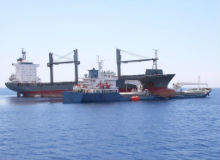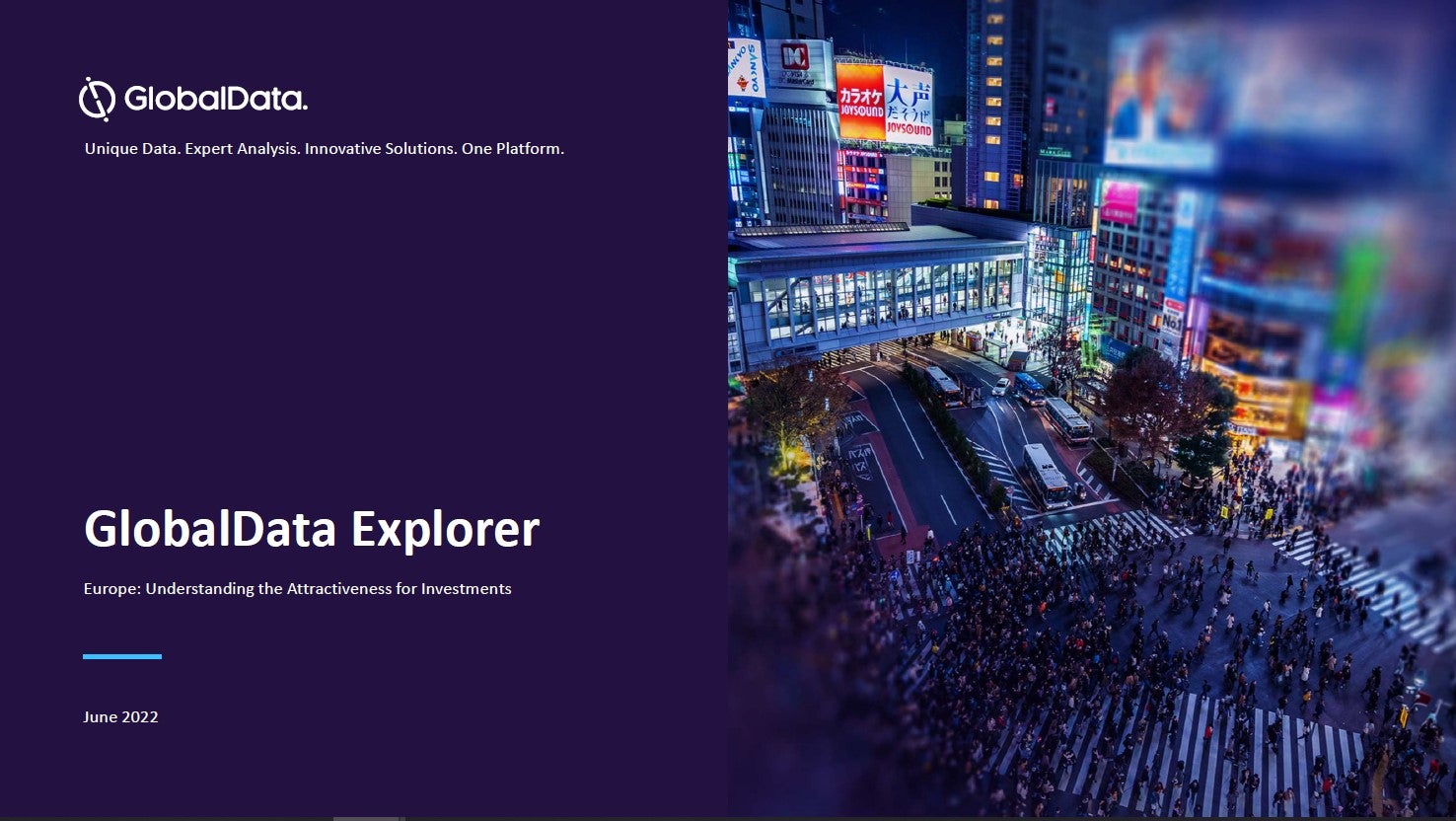
Whenever or wherever they happen, a collision can have grave consequences.
In 2014, two container ships, the German MV Colombo Express and MV Maersk Tanjong, collided in Egypt’s Suez Canal. The impact saw three containers thrown from the Colombo Express and caused 65ft-long dent in the vessel, and it delayed traffic through the canal.
How well do you really know your competitors?
Access the most comprehensive Company Profiles on the market, powered by GlobalData. Save hours of research. Gain competitive edge.

Thank you!
Your download email will arrive shortly
Not ready to buy yet? Download a free sample
We are confident about the unique quality of our Company Profiles. However, we want you to make the most beneficial decision for your business, so we offer a free sample that you can download by submitting the below form
By GlobalDataFurthermore, in April 2015, the motor vessel Privocean hit the 98-ft towing vessel Texas in the Mississippi River. According to reports, the Privocean came loose from its mooring and drifted, before colliding with the moored Texas. Crew members were taken to hospital but the US Coast Guard reported no injuries.
The Houston Ship Channel was also closed in March to help experts deal with a flammable gas additive, spilled when the Conti Peridot and the Danish-flagged Carla Maersk, a chemical tanker, crashed into each other.
It is not just vessels coming into contact that raises concerns, but also vessels hitting oil platforms. Fifteen workers had to be evacuated from a North Sea platform earlier this year when a supply vessel hit the installation, causing minor damage.
A traditional tall ship is set to become the first built in the San Francisco Bay Area in 100 years.
However, in more severe circumstances, there is loss of life, as was the case in December 2012, when carrier Baltic Ace collided with container ship Corvus J in the North Sea shipping lanes near the Dutch coast. The Ace sank after the incident and four crew members lost their lives.
Looking back to 1987, the MV Doña Paz, a Philippine passenger ferry, collided with the MT Vector oil tanker, causing a fire to spread. It is estimated that more than 4,000 people died, making it the deadliest maritime disaster in peacetime history.
Simulation and investigation
In an attempt to limit these types of catastrophes, maritime, meteorological and oceanographic consultancy BMT ARGOSS and marine surveying company BMT Surveys have partnered to use the Rembrandt simulator, which can recreate specific collisions to aid the investigation of incidents and act as a tool to improve training among seafarers.
The simulator, used worldwide for both small and large collisions involving cruise, ferry, LNG, tanker, container and bulk carrier operators, uses data from the voyage data recorder (VDR), radar images and Automatic Tracking System information relating to the ships in question.
When the data from the collision has been collated, the simulator creates a reconstruction of the event, allowing investigators to view what happened in 3D and multiple angles, which is crucial for the balance of argument and giving maritime lawyers a clear visual understanding of the chain of events.
As well as recreating a 3D model, Rembrandt uses sound files and environmental data, and detail such as changes of course and speed, further aiding the investigation into the root causes.
But what about the accurate representation of ship size and characteristics, which could prove to be key clues to the reasons behind a collision? The simulator uses a range of models that have more than 750 parameters, which provides some degree of certainty that the ships used on Rembrandt are not wildly different to their real-life counterparts.
However, perhaps one of the more defining aspects of Rembrandt is the ‘what if’ possibilities it provides. As well as the creation of a model representation, the Rembrandt team can also showcase the outcomes produced if a different course of action had been taken, whether that is a change in direction or speed.
This could be pertinent if a ship had been found to have broken regulations, with the simulator demonstrating that different actions might have, in some cases, averted the collision altogether.
Just like anything that relies on multiple sources of data, however, Rembrandt is not immune to difficulties.
The third-party data from the VDR can be compromised by the type and quality of VDR system in use, for example, meaning that BMT would have to rely on terrestrial AIS information.
One important point to keep in mind with Rembrandt is that its core purpose is reconstruction, not prevention per se.
Safety at sea
A fundamental element of collision prevention is the International Regulations for Preventing Collisions at Sea, or COLREGs.
“You can trace the origins of these regulations back to the 19th century, when the advent of steam-powered vessels led countries to agree rules for passing vessels and the carriage of lights,” says International Maritime Organization media and communications officer Natasha Brown.
“But regulations must be implemented to be effective. Moreover, the COLREGs are only one part of a body of regulations designed to reduce to a minimum the number of accidents at sea and to minimise their impact. Ships must be constructed properly, seafarers must be adequately trained and work/rest hours should be complied with.”
As highlighted by Brown, human error is an extremely important factor in maritime collisions and the wellbeing of seafarers.
A Nautical Institute report published in 2007 describes how investigations into collisions have shown that the cause of many is when the officer of the watch of “one or both vessels was completely unaware of the other vessel until the time of the collision”, while 24% were due to “insufficient assessment of the situation and 23% to poor lookout”.
Advanced technology turbochargers have been fitted on the world’s two largest containerships.
It goes on to describe how, in 2006, Captain Nick Beer, then of the MAIB, wrote that “in 43% of all the collision cases involving merchant vessels that were investigated by the MAIB over a ten-year period, the watch keeper was either completely unaware of the other vessel until the time of the collision or only became aware of the other vessel when it was too late to take effective avoiding action.”
Such a scenario was again described in 2013, when the MAIB found that a collision between Seagate and the Timor Stream was because of “poor watch keeping standards” – adding: “The officer in charge of the navigational watch on both vessels failed to keep a proper lookout, did not assess the risk of, or take appropriate action to avoid collision.”
Moreover, a 2011 document produced by marine insurance company The Swedish Club stated that the same mistakes appeared to be repeating themselves, with added distractions from mobile phones or officers not being correctly trained to use new technology.
Such a body of evidence indicates that, while Rembrandt and possible future developments have important roles to play, the wellbeing and training of officers of the watch is still likely the best form of defence.








